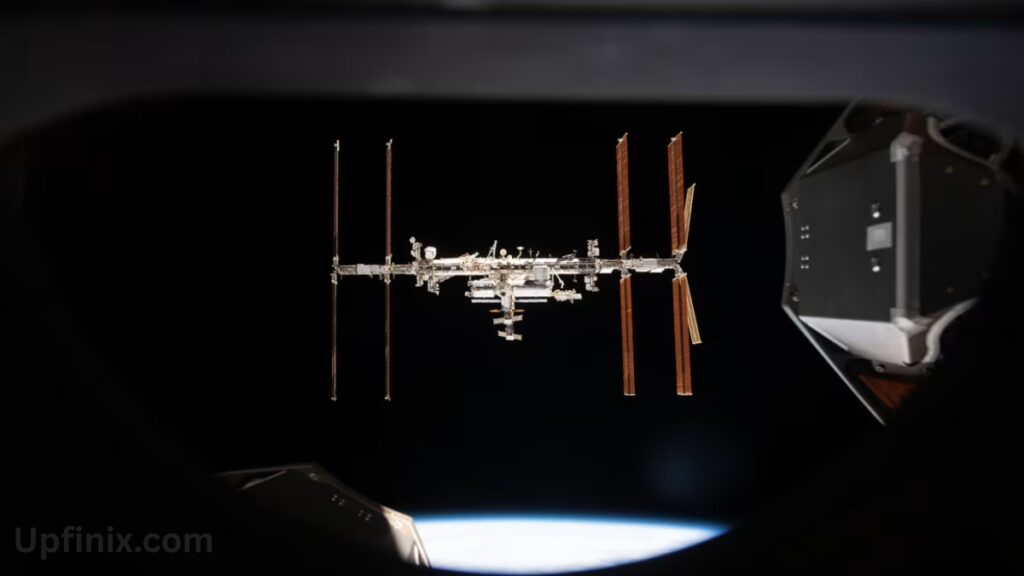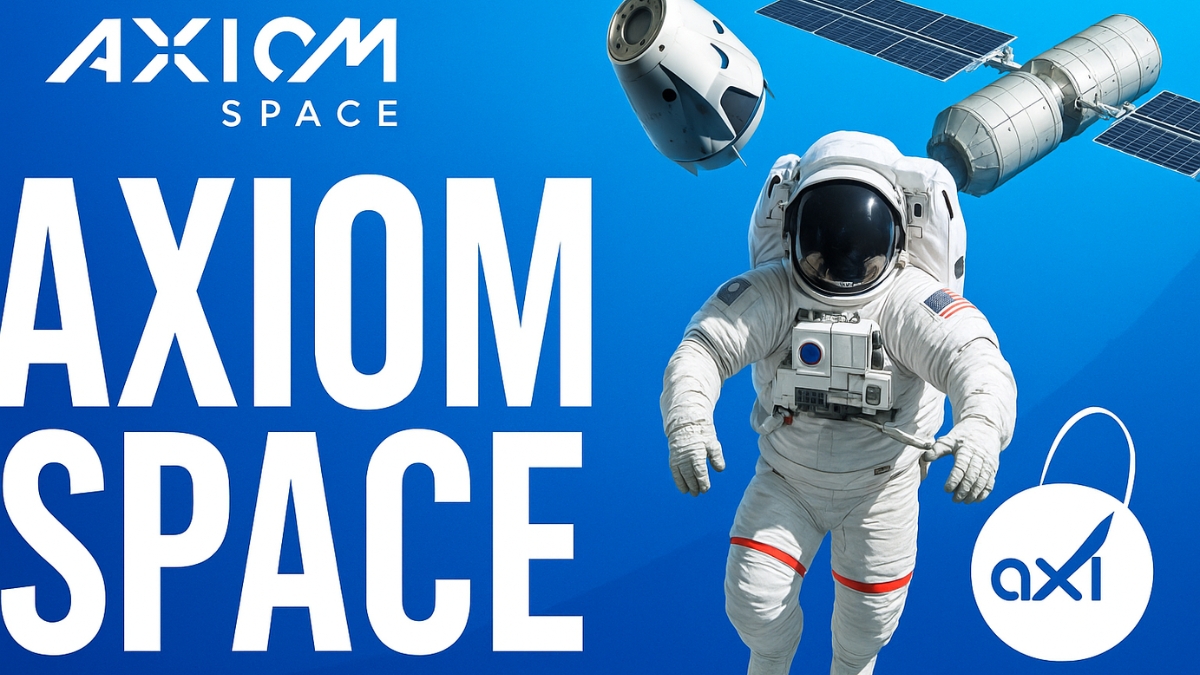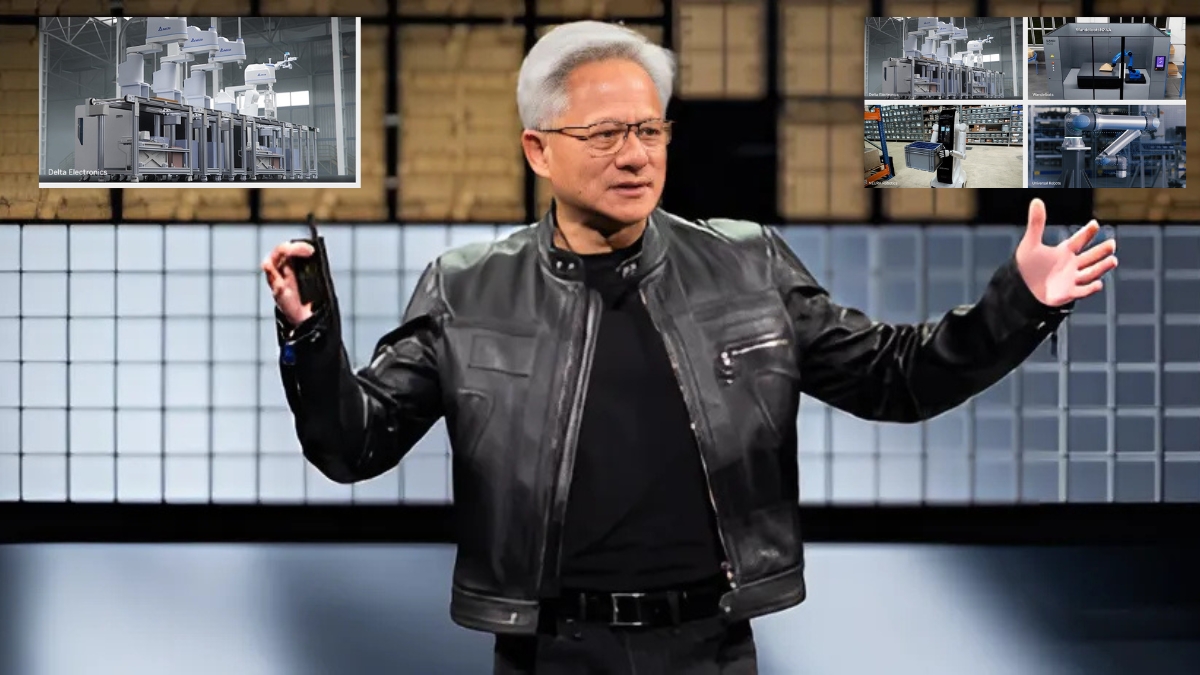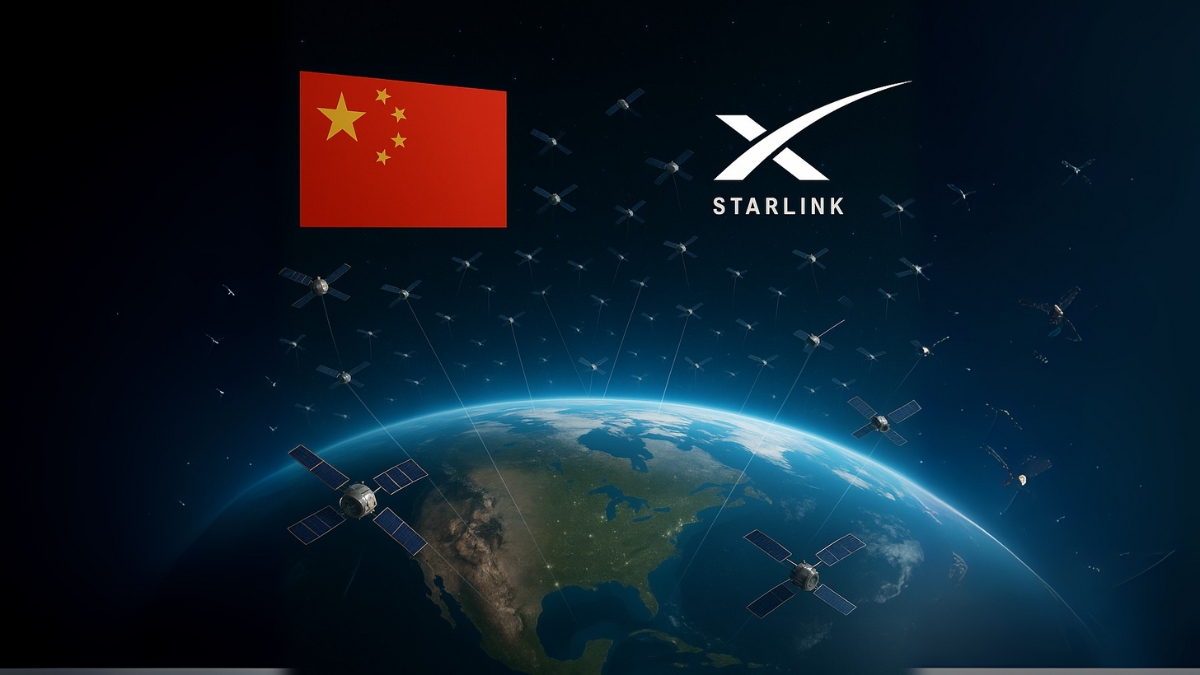As humanity stands on the cusp of a new era in space exploration, private companies are stepping up to make the cosmos more accessible than ever before. Axiom Space, a Houston-based innovator, is leading this charge by offering commercial spaceflight missions and developing the world’s first commercial space station. Founded in 2016, Axiom Space is not just participating in the space race—it’s redefining it. From sending multinational crews to the International Space Station (ISS) to planning a revolutionary space station, Axiom Space is shaping the future of human presence in space. This article explores the company’s history, missions, partnerships, and ambitious plans for 2025 and beyond, providing a comprehensive look at how Axiom Space is transforming space exploration.
Table of Contents
What is Axiom Space?
Axiom Space is a privately funded space infrastructure developer headquartered in Houston, Texas. Established in 2016 by Michael T. Suffredini, former NASA ISS program manager, and Kam Ghaffarian, an engineer and entrepreneur, the company aims to create a thriving home in space that benefits humanity. With a workforce of approximately 790 employees as of 2023, Axiom Space provides services like human spaceflight, in-space research, manufacturing, and exploration. Its team includes notable figures such as former NASA administrator Charles Bolden and astronauts Michael Lopez-Alegria, Peggy Whitson, Brent W. Jett Jr., and Koichi Wakata, lending unparalleled expertise to its endeavors (Axiom Space).
The company’s vision is to foster a vibrant space economy, offering opportunities for governments, private companies, and individuals to engage in space activities. Axiom Space is best known for its missions to the ISS and its plans to build Axiom Station, a commercial space station set to redefine low-Earth orbit operations.
History and Milestones
Axiom Space was founded with a clear goal: to expand human presence in space through commercial means. Michael T. Suffredini’s decade-long experience managing the ISS at NASA from 2005 to 2015 provided a strong foundation for the company’s operations. Kam Ghaffarian, who previously led Stinger Ghaffarian Technologies, a major NASA contractor, brought entrepreneurial expertise to the venture (Wikipedia: Axiom Space).
Key milestones include:
- 2020: NASA awarded Axiom Space a $140 million contract to develop a commercial module for the ISS, a significant step toward integrating private infrastructure with the station (NASA: Commercial Module).
- 2022: Axiom Mission 1 (Ax-1) marked the first commercially crewed private spaceflight to the ISS, launched on April 8, 2022, via SpaceX’s Falcon 9 and Crew Dragon.
- 2023-2024: Successful missions Ax-2 and Ax-3 further expanded Axiom’s presence in space, with diverse crews conducting research and outreach.
- 2025: Axiom Mission 4 (Ax-4) launched on June 25, 2025, showcasing international collaboration with astronauts from India, Poland, and Hungary (Axiom Space: Ax-4).
These milestones highlight Axiom Space’s rapid growth and its pivotal role in the commercial space industry.
Axiom Space Missions to the ISS
Axiom Space’s missions to the ISS are central to its mission, providing a platform for private and national astronauts to conduct research, test technologies, and engage in outreach. These missions also lay the groundwork for Axiom Station.
Axiom Mission 4 (Ax-4)
Launched on June 25, 2025, at 2:31 a.m. ET from NASA’s Kennedy Space Center, Ax-4 is a historic mission aboard the SpaceX Dragon spacecraft named “Grace” (Axiom Space X Post). The 14-day mission, commanded by Peggy Whitson, includes astronauts Shubhanshu Shukla (India), Sławosz Uznański (Poland, ESA), and Tibor Kapu (Hungary). This mission marks the first ISS visit for these nations and their second government-sponsored human spaceflight in over 40 years.
The crew is conducting approximately 60 scientific studies involving 31 countries, focusing on:
- Human Research: Studying physiological and psychological effects of spaceflight.
- Earth Observation: Capturing data to enhance environmental understanding.
- Life and Material Sciences: Investigating stem cells, cancer growth, and material behavior in microgravity.
These studies aim to advance global knowledge and support the development of Axiom Station (Axiom Space: Ax-4 Research).
Readmore: – Bahama Breeze Closures: Why 15 Locations Shut Down in 2025
Previous Missions
- Ax-1 (2022): Launched April 8, 2022, with Michael López-Alegría, Eytan Stibbe, Larry Connor, and Mark Pathy, marking the first private crew to the ISS.
- Ax-2 (2023): Commanded by Peggy Whitson, with John Shoffner, Ali Alqarni, and Rayyanah Barnawi, focusing on research and outreach.
- Ax-3 (2024): Led by Michael López-Alegría, with Walter Villadei, Alper Gezeravcı, and Marcus Wandt, expanding international participation.
Each mission has built on the previous, enhancing Axiom Space’s expertise and global reach (Wikipedia: Axiom Space).
| Mission | Launch Date | Crew | Key Objectives |
|---|---|---|---|
| Ax-1 | April 8, 2022 | Michael López-Alegría, Eytan Stibbe, Larry Connor, Mark Pathy | First commercial ISS mission, research, outreach |
| Ax-2 | May 21, 2023 | Peggy Whitson, John Shoffner, Ali Alqarni, Rayyanah Barnawi | Microgravity research, technology demonstrations |
| Ax-3 | January 18, 2024 | Michael López-Alegría, Walter Villadei, Alper Gezeravcı, Marcus Wandt | International collaboration, scientific studies |
| Ax-4 | June 25, 2025 | Peggy Whitson, Shubhanshu Shukla, Sławosz Uznański, Tibor Kapu | 60 studies, 31 countries, first ISS mission for India, Poland, Hungary |
Axiom Station: The Future of Commercial Space
Axiom Station is set to become the world’s first commercial space station, succeeding the ISS after its retirement in 2030. Designed as a modular platform, it will support research, manufacturing, and commercial activities in low-Earth orbit (Axiom Space: Axiom Station).
Design and Modules
Axiom Station will consist of several modules, initially attached to the ISS before operating independently:
- Payload, Power, and Thermal Module (PPTM): Scheduled for launch in 2027, it provides power and thermal management, equivalent to ISS capabilities.
- Habitat One (Hab-1): Offers crew quarters and activates research and manufacturing facilities.
- Airlock Module: Enables extravehicular activities (EVAs) with Axiom’s custom spacesuits.
- Additional Modules: Habitat 2 and a Research and Manufacturing Facility will complete the station by the early 2030s.
The station’s interior, designed by Philippe Starck, features tufted padding, color-changing LEDs, high-speed Wi-Fi, and a glass-walled cupola for stunning views (Wikipedia: Axiom Space).
Timeline
- 2027: PPTM launch and attachment to the ISS.
- 2028: Hab-1 connects to PPTM, detaching from the ISS to form the core of Axiom Station.
- Late 2020s to Early 2030s: Full assembly with additional modules, achieving independent operation.
Axiom Station will serve as a hub for governments, researchers, and businesses, fostering a robust space economy (NASA: Commercial Space).

Partnerships and Contracts
Axiom Space’s success is driven by strategic partnerships with leading space organizations.
NASA Contracts
- Commercial Module Contract: In January 2020, NASA awarded Axiom Space a $140 million contract to develop a commercial module for the ISS, set to launch in 2026 (NASA: Commercial Module).
- Spacesuit Development: In June 2022, Axiom Space won a $228.5 million task order under a $3.5 billion NASA contract to develop the Axiom Extravehicular Mobility Unit (AxEMU) for ISS and Artemis lunar missions (Axiom Space: Spacesuits).
SpaceX Collaboration
Axiom Space partners with SpaceX to transport astronauts to the ISS using Falcon 9 rockets and Crew Dragon spacecraft, as seen in missions like Ax-4 (Axiom Space: Ax-4).
International Collaborations
Ax-4 exemplifies Axiom’s commitment to global cooperation, with astronauts from India (ISRO), Poland (ESA), and Hungary (HUNOR program), enhancing international space programs (Axiom Space: Ax-4).
Research and Development
Axiom Space is a leader in advancing space-based research and technology.
Research During Missions
Axiom missions prioritize microgravity research. Ax-4, for instance, includes 60 studies from 31 countries, covering:
- Medical Research: Effects of spaceflight on diabetic astronauts, brain, and body.
- Biological Sciences: Stem cell behavior, cancer growth, and molecular resilience.
- Technology Demonstrations: Testing new materials and systems in microgravity (Axiom Space: Ax-4 Research).
Spacesuit Development
The AxEMU spacesuit, developed for NASA’s Artemis program, offers enhanced mobility, protection, and tools for lunar exploration. It builds on NASA’s xEMU design and supports a wide range of crew members (Axiom Space: AxEMU).
Also Read: – Chinese Satellite Starlink: The 2025 Space Internet Race
In-Space Manufacturing
Axiom Station will enable the production of advanced materials and pharmaceuticals in microgravity, potentially revolutionizing industries on Earth (Axiom Space).
Impact on Space Exploration
Axiom Space is transforming space exploration by:
- Expanding Access: Enabling private and national astronauts to visit the ISS.
- Sustaining Human Presence: Developing Axiom Station to succeed the ISS.
- Advancing Science: Conducting cutting-edge research that benefits Earth and space.
- Fostering Collaboration: Including diverse nations in its missions, as seen in Ax-4.
By democratizing space access, Axiom Space is inspiring a new generation and driving economic growth in the space industry (Space.com: Axiom Station).
What’s New in 2025
In 2025, Axiom Space achieved a significant milestone with the successful launch of Ax-4 on June 25, 2025. The mission, aboard the SpaceX Dragon “Grace,” highlights Axiom’s role in international space exploration. Additionally, progress on Axiom Station continues, with the first module’s fabrication underway and a critical design review scheduled for 2024 (NASA: Commercial Space).
Frequently Asked Questions (FAQ)
1. What is Axiom Space?
Axiom Space is a private space company founded in 2016 in Houston, Texas, dedicated to commercial spaceflight and infrastructure development. It conducts missions to the ISS, where private and national astronauts perform research and technology demonstrations. Axiom is also building Axiom Station, the first commercial space station, set to operate independently by the early 2030s. The company collaborates with NASA, SpaceX, and international space agencies, leveraging the expertise of former NASA professionals like Michael T. Suffredini and astronauts like Peggy Whitson. Its mission is to create a thriving space economy, making space accessible for scientific, commercial, and exploratory purposes (Axiom Space).
2. Who are the founders of Axiom Space?
Axiom Space was founded by Michael T. Suffredini and Kam Ghaffarian. Suffredini, the former NASA ISS program manager from 2005 to 2015, brings deep expertise in space station operations. Ghaffarian, an engineer and entrepreneur, previously led Stinger Ghaffarian Technologies, a major NASA contractor sold to KBR in 2018. Their combined experience has positioned Axiom Space as a leader in commercial space exploration, with a focus on innovative infrastructure and human spaceflight (Wikipedia: Axiom Space).
3. What missions has Axiom Space conducted?
Axiom Space has conducted four missions to the ISS:
• Ax-1 (2022): The first private crewed mission, launched April 8, 2022, with Michael López-Alegría and others.
• Ax-2 (2023): Led by Peggy Whitson, focused on research and outreach.
• Ax-3 (2024): Commanded by Michael López-Alegría, with a multinational crew.
• Ax-4 (2025): Launched June 25, 2025, with astronauts from India, Poland, and Hungary, conducting 60 studies (Axiom Space: Ax-4).
• A fifth mission, Ax-5, is planned for 2026 (Wikipedia: Axiom Space).
4. What is Axiom Station?
Axiom Station is a modular commercial space station being developed by Axiom Space to succeed the ISS after its 2030 retirement. It will initially attach to the ISS, with the first module, the Payload, Power, and Thermal Module, launching in 2027. Subsequent modules, including Habitat One and an Airlock, will enable independent operation by the early 2030s. Designed for research, manufacturing, and commercial activities, it features a modern interior by Philippe Starck (Axiom Space: Axiom Station).
5. How does Axiom Space contribute to space exploration?
Axiom Space contributes by:
• Offering ISS missions for diverse astronauts.
• Developing Axiom Station for continued human presence in space.
• Conducting extensive microgravity research.
• Advancing technology through spacesuit development.
• Promoting international collaboration (Axiom Space).
6. What was the significance of Axiom Mission 4?
Ax-4, launched on June 25, 2025, is significant for:
• Marking the first ISS mission for India, Poland, and Hungary.
• Conducting 60 studies across 31 countries.
• Demonstrating Axiom’s role in global space cooperation.
• Supporting the development of Axiom Station (Axiom Space: Ax-4).
Conclusion
Axiom Space is at the forefront of commercial space exploration, bridging the gap between government-led missions and a vibrant space economy. Its successful ISS missions, like Ax-4, and the development of Axiom Station highlight its commitment to innovation and accessibility. As we move into 2025 and beyond, Axiom Space’s partnerships, research, and infrastructure will continue to shape the future of space exploration. Stay updated on their journey by following their official channels (Axiom Space) or sharing your thoughts in the comments below!







